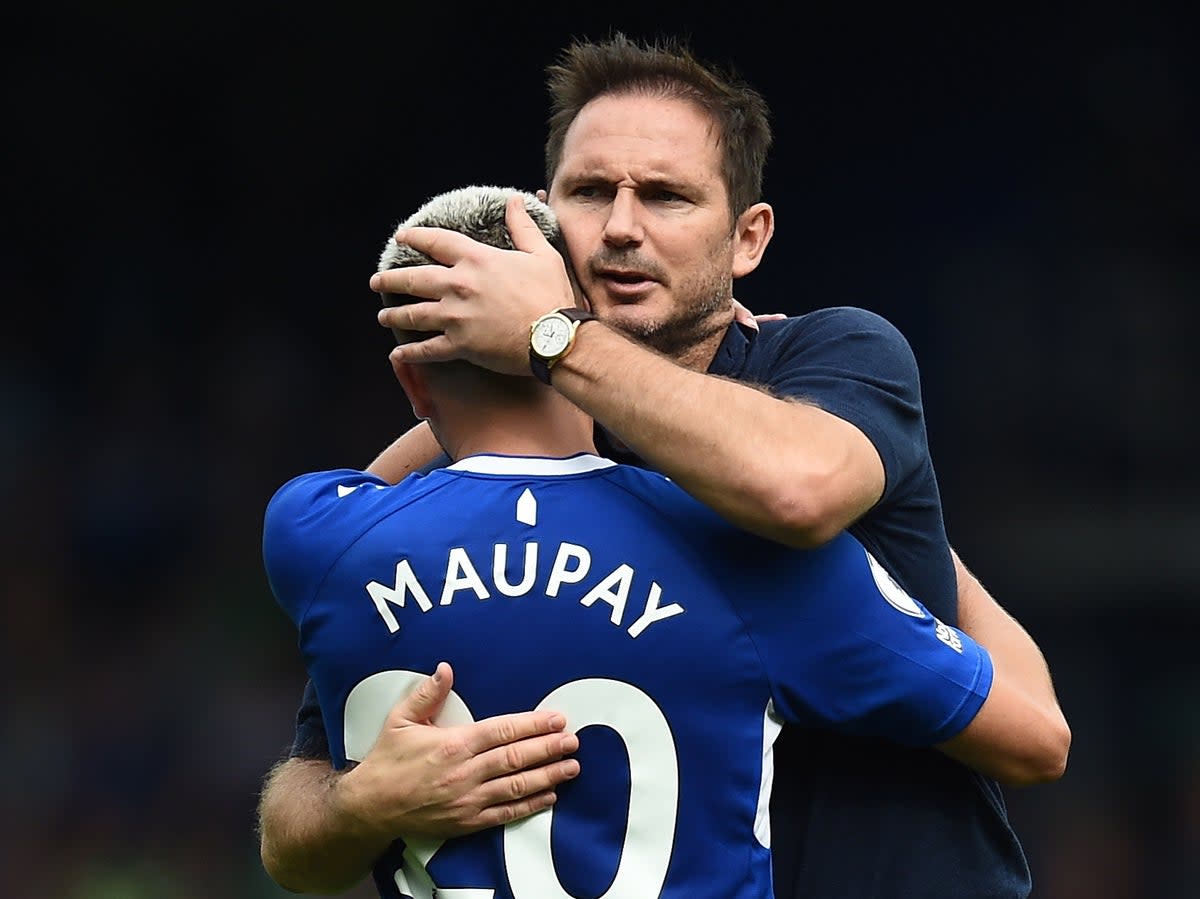Improving Everton search for more tangible proof of progress

The first anniversary of a high point in Rafa Benitez’s ill-fated reign at Goodison Park does not fall until 25 September but, in one respect, a year is already up. Since Everton beat Norwich 2-0 to go fifth, they have played 38 league games. And over the equivalent of a full campaign, they have won just seven.
None of those victories have come this season and, as they meet a West Ham team furnished with Moyesian stubbornness, they may complete a calendar year with a mere seven triumphs. If football is famously a results business, it may not explain why Everton, often a byword for impatience and unhappiness in recent years, seem strangely united and optimistic.
They are the best winless side in the Premier League (which, as Leicester are the only other one, may not be saying much), but if it is an indication that conjuring triumphs is difficult in a division where virtually everyone appears significantly stronger after their summer trading, there are other factors.
Six games represent a small sample size. In Everton’s case, two of the three at home were against Chelsea and Liverpool, leaving only one that looked particularly winnable. They began the campaign in a state of disrepair, short of signings, with Dominic Calvert-Lewin injured a few days before the opening game and three more players hurt in their opening two matches. They lost both.
Since then, they have drawn all four. Only the Manchester clubs and Tottenham are also unbeaten in the same time and if that involves a selective use of statistics, it at least points to a new-found resilience. Part of Everton’s problem last season was that they were too beatable. Their 21 defeats meant they went from September to April without mustering a two-game unbeaten run. Now they seem to have more substance.
With Everton ninth for shots and joint 17th for goals, the sense is that Calvert-Lewin’s absence has cost them a win, if not two, and Frank Lampard believes his side merit a points tally closer to double figures. The counter-argument is that Everton’s defensive record, the joint best outside the top four, is flatteringly good; both Brentford and Liverpool hit Everton’s woodwork three times, Jordan Pickford has made the second most saves in the league, some of them spectacular, and had his form been merely average then their points tally may be halved. If he is sidelined now, it creates the possibility that draws are turned back into defeats.
But the closeness of their games shows a competitiveness: they have two fewer wins than Bournemouth, but the Cherries have a goal difference of minus 13. Everton’s is just minus two. Moreover, if improvement has been rapid since the embarrassment of a 4-0 hammering at the hands of Minnesota in pre-season prompted Lampard to raise the spectre of relegation, it has been accompanied by evidence of a plan and the ability to implement one.
“Compromise is a word for last season; for me as a coach it was a great experience to try and find a way,” Lampard said and he did, but the escape from relegation provided fewer answers about what he stood for or if he had longer-term solutions to fix Everton.
The summer has provided some clues; in imbuing team spirit and showing common-sense thinking, Lampard has not brought managerial genius but he has lent a welcome clarity of thought. He inherited a squad packed with the injury prone and, in James Tarkowski, Conor Coady and Dwight McNeil, targeted those with excellent fitness records. He felt he had too few leaders, which could be exacerbated when Seamus Coleman is phased out, but Tarkowski and Coady have remedied that. They could make a difference in another respect: Everton conceded more league goals last season than in any in the preceding six decades but promise to be tighter at the back now.
Lampard picked up on Jamie Carragher’s criticism in March that too many Everton players couldn’t run. Fabian Delph, static but authoritative, helped keep Everton up but left while Allan, one of those Carragher named, is yet to play a minute this season. Meanwhile, the return of Idrissa Gueye has added athleticism; as they tend to have less possession, despite Lampard’s intention to play through the thirds and bringing in two centre-backs who are comfortable on the ball, that mobility becomes still more important. If Everton’s threat, especially in Calvert-Lewin’s absence, has come from the counter-attacking speed of Demarai Gray and Anthony Gordon. Everton have got both into scoring positions. Each is in the top 20 in the division for shots and the Merseysider’s two well-taken goals suggest his finishing is improving.
Lampard’s fondness for young players is famous; impressively, though, several, from Gordon to full-backs Nathan Patterson and Vitalii Mykolenko, appear to be developing on his watch. Perhaps the most gifted of all, Amadou Onana, has shown the vast potential to indicate why Lampard made him his biggest buy. He had to split his budget several ways but there are early signs that his eight signings will yield several successes and that a few judgement calls have been justified.
If part of the objective is to move beyond a side who cling on in games to one who can play on the front foot more, the switch from three centre-backs to two represented a sign of ambition. It has not yet brought a win and, with in-form Manchester United and Tottenham in their next four, the wait could become onerous. If draws and defeats may seem to offer scant proof of progress, for now Everton sense a year of worse results could lead to better days.

